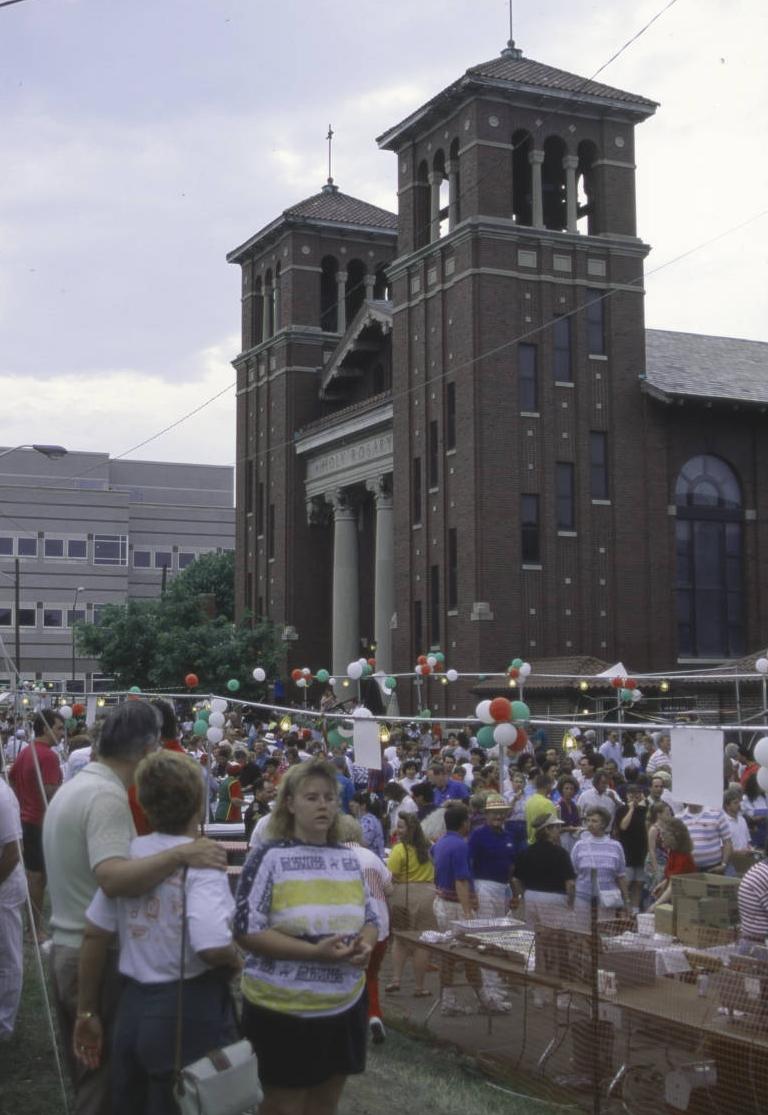Holy Rosary-Danish Church is a historic district bounded by Virginia Avenue and Wright, Buchanan, and East streets. The neighborhood is located approximately one-half mile southeast of .
Platted in 1854, the area contained rental cottages constructed and inhabited originally by skilled German, Irish, Scots, and Welsh laborers. Neighborhood houses, which date primarily from the late 19th century, are small working-class cottages. The earliest house dates from 1857, the most recent from the 1940s.

The Danish influence was most apparent between 1870 and 1890. Sixty-three resided there per the 1880 census, most of them skilled laborers in the building industry. In 1872, Danish Lutherans erected an Italian Romanesque brick church and parsonage on McCarty Street, which housed their societies and cultural events even after parishioners had departed the neighborhood. They sold the church, parish hall, and parsonage in 1956.
immigrants, mostly of Sicilian origin, replaced the Danes and comprised nearly 90 percent of the neighborhood by 1910. They first attended on Maryland Street, but when established an Italian mission in the neighborhood the Catholic archdiocese authorized the creation of an Italian national parish.
Located at Stevens and East streets, Holy Rosary Church, an Italian Renaissance structure (begun 1911, completed 1925), was the first of three Italian national parishes in Indiana. A school, established adjacent to the church in 1924, educated parish children until its closing in 1957. The Latin School, founded in 1955 to prepare boys for the priesthood, occupied the building from 1957 to 1977. The neighborhood, located close to the city’s rail lines, markets, and warehouses, provided an ideal residence for the Italians who were employed almost exclusively in produce businesses.
The area’s Italian population has steadily declined in the 21st century though it remains the Italian center of the city. The Italian Festival, held at Holy Rosary each June since 1984, raises money for ongoing building maintenance. When the archdiocese proposed closing the church in 1991-1992, parishioners successfully rallied to prevent its discontinuation.
The commercial/residential corridor along Virginia Avenue has witnessed a surge in growth. Though some historic commercial structures remain, the , finished in 2013, runs along Virginia Avenue and has changed the landscape. The trail has attracted bicyclists and pedestrians and accelerated demand for housing and retail.
City-County Council members and professional athletes call the area home. Developers have mindfully integrated modern structures into the area while preserving Holy Rosary-Danish Church’s historic integrity. Though the district was listed on the National Register of Historic Places in 1986, the (IHPC) has not designated it as a locally protected historic district. Growth, therefore, has come faster to the northeast side of Virginia Avenue relative to the opposite side, , which is an IHPC-designated locally protected historic district in addition to being listed on the National Register. Commercial corridors along East Street retain scattered historic commercial structures, while the complex looms along the western edge.

Is this your community?
Do you have photos or stories?
Contribute to this page by emailing us your suggestions.

